
漢德百科全書 | 汉德百科全书
 Belgium
Belgium

 European Union
European Union
 History of the European Union
History of the European Union

 European Union
European Union
 *Founding states
*Founding states

 Geography
Geography

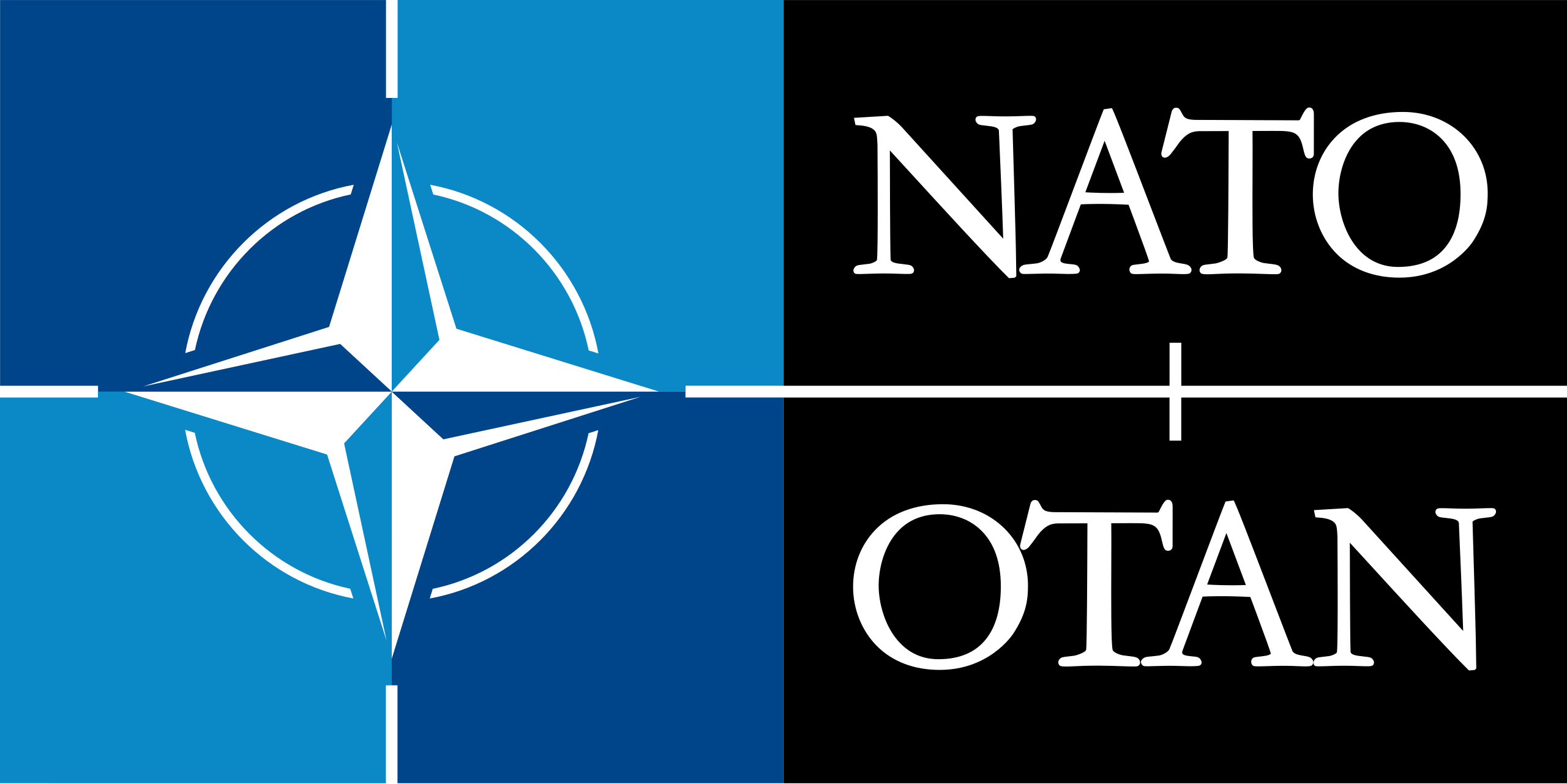 Mitglieder der NATO
Mitglieder der NATO

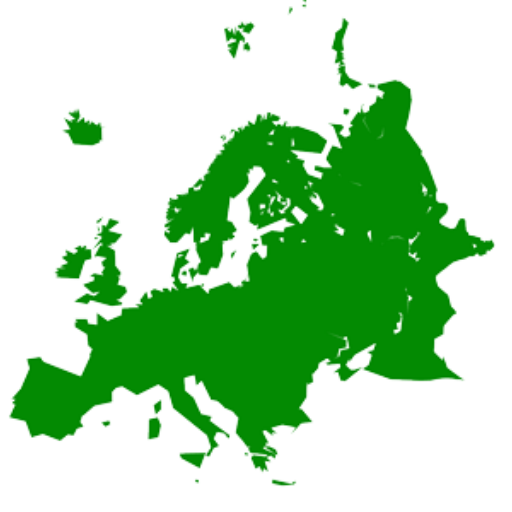 States of Europe
States of Europe

Das Königreich Belgien (niederländisch , französisch Royaume de Belgique) ist ein föderaler Staat in Westeuropa. Es liegt an der Nordsee und grenzt an die Niederlande, Deutschland, Luxemburg und Frankreich. Belgien zählt rund 11,3 Millionen[3] Einwohner (2015) auf einer Fläche von 30.528 Quadratkilometern und zählt somit zu den dicht besiedelten Staaten. Der Grad der Urbanisierung Belgiens ist mit fast 98 Prozent der höchste in Europa.[7] Die Stadt Brüssel ist die Hauptstadt und Sitz der belgischen Königsfamilie. Weitere bedeutende große Städte sind Antwerpen, Gent, Charleroi, Namur, Lüttich und Brügge.
Seit der Unabhängigkeit 1830 und Verfassungsgebung 1831 ist Belgien eine konstitutionelle Erbmonarchie[1] (siehe auch belgische Monarchie). Der Norden des Landes mit den Flamen ist niederländisches, der Süden mit den Wallonen französisches Sprachgebiet (vgl. flämische und französische Gemeinschaft). Die Region Brüssel-Hauptstadt ist offiziell zweisprachig, jedoch mehrheitlich frankophon bewohnt.[8] Im deutschen Sprachgebiet in Ostbelgien sind Standarddeutsch und westmitteldeutsche Mundarten verbreitet.
Der anhaltende flämisch-wallonische Konflikt prägt die gegensätzlichen Interessen der Vertreter der beiden großen Bevölkerungsgruppen in der belgischen Politik. Seit den 1970er-Jahren wird daher versucht, diesem Problem durch eine Dezentralisierung der Staatsorganisation zu begegnen. Dazu wurde Belgien in einen Bundesstaat, bestehend aus sechs Gliedstaaten – drei Regionen und drei Gemeinschaften – umgewandelt. Die Regionen Flandern, Wallonien und Brüssel-Hauptstadt sowie die flämische, die französische und die deutschsprachige Gemeinschaft bilden heute als Gliedstaaten die politische Grundlage des Landes.
Belgien ist Gründungsmitglied der Europäischen Wirtschaftsgemeinschaft (EWG), der heutigen Europäischen Union (EU), deren wichtigste Institutionen in seiner Hauptstadt Brüssel ihren Sitz haben. Der belgische Staat ist des Weiteren neben den Niederlanden und Luxemburg Mitglied in der Wirtschaftsunion Benelux.
 *Track and field athletics
*Track and field athletics
 4x100 m Men
4x100 m Men
 *Track and field athletics
*Track and field athletics
 4x100 m Woman
4x100 m Woman
 *Track and field athletics
*Track and field athletics
 4x400 m Men
4x400 m Men
 Atomic bomb
Atomic bomb

 European Union
European Union
 History of the European Union
History of the European Union

 European Union
European Union
 *Founding states
*Founding states
 France
France

 Geography
Geography
 Leichtathletik-Weltmeisterschaften
Leichtathletik-Weltmeisterschaften
 2005 Helsinki
2005 Helsinki
 Leichtathletik-Weltmeisterschaften
Leichtathletik-Weltmeisterschaften
 2003 Saint-Denis
2003 Saint-Denis
 Leichtathletik-Weltmeisterschaften
Leichtathletik-Weltmeisterschaften
 2003 Saint-Denis
2003 Saint-Denis

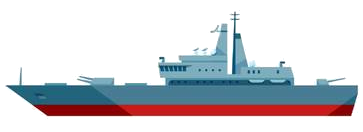
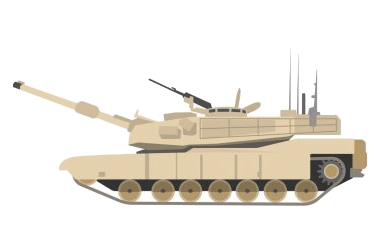
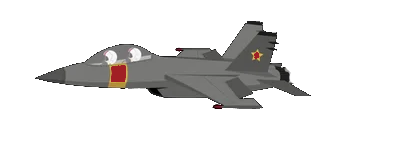
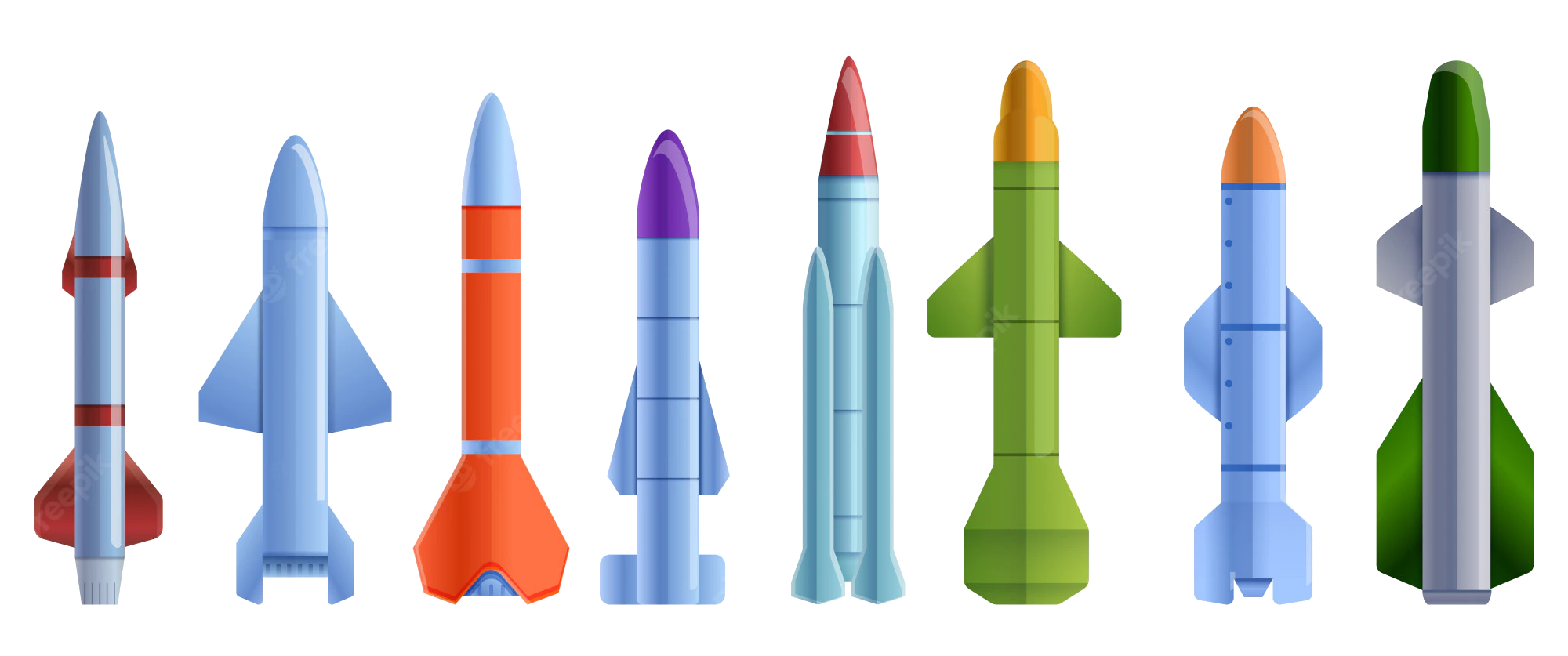 Military, defense and equipment
Military, defense and equipment
 Nuclear Weapon
Nuclear Weapon

 Mitglieder der NATO
Mitglieder der NATO

 Party and government
Party and government
 Group of the twenty most important industrial and emerging countries
Group of the twenty most important industrial and emerging countries

 Party and government
Party and government
 Group of Seven,G7
Group of Seven,G7

 States of Europe
States of Europe

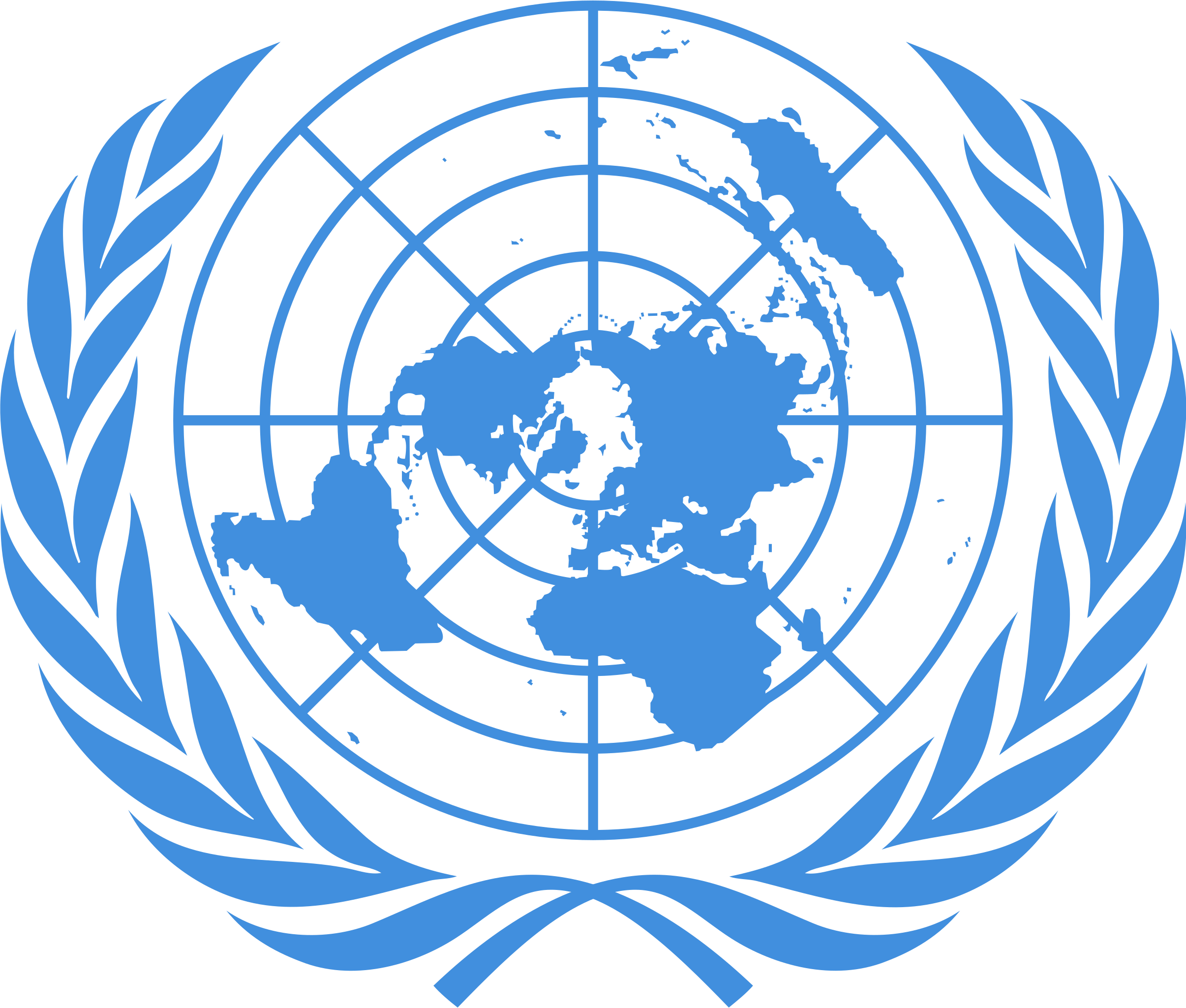 United Nations
United Nations
 United Nations Security Council
United Nations Security Council
 Hydrogen bomb
Hydrogen bomb

Frankreich ![]() [ˈfʁaŋkʁaɪ̯ç] (französisch [fʁɑ̃s], amtlich République française [ʁe.py.ˈblik fʁɑ̃.ˈsɛz], deutsch Französische Republik) ist ein demokratischer, interkontinentaler Einheitsstaat in Westeuropa mit Überseeinseln und -gebieten auf mehreren Kontinenten. Metropolitan-Frankreich, d. h. der europäische Teil des Staatsgebietes, erstreckt sich vom Mittelmeer bis zum Ärmelkanal und zur Nordsee sowie vom Rhein bis zum Atlantischen Ozean. Sein Festland wird wegen seiner Landesform als Hexagone (Sechseck) bezeichnet. Frankreich ist flächenmäßig das größte und nach Einwohnern (hinter Deutschland) das zweitgrößte Land der Europäischen Union. Es umfasst (nach Russland und der Ukraine) das drittgrößte Staatsgebiet in Europa. Paris ist die Hauptstadt und als Agglomeration mit dem Gemeindeverband Métropole du Grand Paris und den umliegenden Gebieten der Region Île-de-France größter Ballungsraum des Landes vor Lyon, Marseille, Toulouse und Lille.
[ˈfʁaŋkʁaɪ̯ç] (französisch [fʁɑ̃s], amtlich République française [ʁe.py.ˈblik fʁɑ̃.ˈsɛz], deutsch Französische Republik) ist ein demokratischer, interkontinentaler Einheitsstaat in Westeuropa mit Überseeinseln und -gebieten auf mehreren Kontinenten. Metropolitan-Frankreich, d. h. der europäische Teil des Staatsgebietes, erstreckt sich vom Mittelmeer bis zum Ärmelkanal und zur Nordsee sowie vom Rhein bis zum Atlantischen Ozean. Sein Festland wird wegen seiner Landesform als Hexagone (Sechseck) bezeichnet. Frankreich ist flächenmäßig das größte und nach Einwohnern (hinter Deutschland) das zweitgrößte Land der Europäischen Union. Es umfasst (nach Russland und der Ukraine) das drittgrößte Staatsgebiet in Europa. Paris ist die Hauptstadt und als Agglomeration mit dem Gemeindeverband Métropole du Grand Paris und den umliegenden Gebieten der Region Île-de-France größter Ballungsraum des Landes vor Lyon, Marseille, Toulouse und Lille.
Im 17. und 18. Jahrhundert hatte Frankreich eine europäische Führungsrolle und Vormachtstellung inne. Bedeutend war die politische und kulturelle Ausstrahlung: Die Hofhaltung Ludwigs XIV. wurde zum Vorbild absolutistischer Staaten in ganz Europa und die Französische Revolution mit der Erklärung der Menschen- und Bürgerrechte gab zusammen mit Okkupationen durch Napoleon Bonaparte in vielen Ländern den Auftakt zu der immer wieder von Rückschlägen unterbrochenen Entwicklung zur Demokratie. In Übersee baute Frankreich zweimal ein Kolonialreich auf. Das erste umfasste u. a. große Teile Nordamerikas und ging großenteils Mitte des 18. Jahrhunderts im Siebenjährigen Krieg verloren; das zweite mit Schwerpunkt in Afrika war im 19. und frühen 20. Jahrhundert das zweitgrößte der Welt. Im 21. Jahrhundert gilt Frankreich mit Deutschland als treibende Kraft der europäischen Integration.
Die Französische Republik wird in ihrer Verfassung als unteilbar, laizistisch, demokratisch und sozial erklärt.[7] Ihr Grundsatz lautet: „Regierung des Volkes durch das Volk und für das Volk“. Frankreich steht auf Rang 26 des Index der menschlichen Entwicklung (2019) der Vereinten Nationen.[8] Gemessen am nominalen Bruttoinlandsprodukt ist es die sechstgrößte Volkswirtschaft der Welt.[5] Die Kaufkraft pro Einwohner betrug 2016 19.254 Euro (zum Vergleich: Deutschland 21.879 Euro, Großbritannien 21.141 Euro).[9] Lebensstandard, Bildungsgrad und durchschnittliche Lebenserwartung[10] gelten als hoch. Als meistbesuchtes Land der Welt empfängt Frankreich rund 83 Millionen ausländische Touristen pro Jahr.[11][12]
Frankreich unterhält die drittstärksten Streitkräfte innerhalb der NATO und das größte Heer der Europäischen Union. Es ist eines der fünf ständigen Mitglieder des UN-Sicherheitsrates und hatte 2010 als Atommacht die weltweit dritthöchste Anzahl an Kernwaffen.[13] Das Land ist Gründungsmitglied der Europäischen Union und der Vereinten Nationen, Mitglied der Frankophonie, der G7, der G20, der NATO, der Organisation für wirtschaftliche Zusammenarbeit und Entwicklung (OECD), der Welthandelsorganisation (WTO) und der Lateinischen Union.
法兰西共和国(法语:République française [ʁepyblik fʁɑ̃sɛz]),通称法国(法语:France [fʁɑ̃s] ![]() 聆听),是本土位于西欧并具有海外大区及领地[注 16]的主权国家,自法兰西第五共和国建立以来实行单一制与半总统制,首都为欧洲大陆最大的文化与金融中心巴黎。该国本土由地中海一直延伸至英吉利海峡及北海,并由莱茵河一直延伸至大西洋,整体呈六角状。海外领土包括南美洲的法属圭亚那及分布于大西洋、太平洋和印度洋的诸岛屿。全国共分为18个大区,其中5个位于海外。法国与西班牙及摩洛哥为同时拥有地中海及大西洋海岸线的三个国家。法国的国土面积全球第四十一位,但却为欧盟及西欧国土面积最辽阔的国家,欧洲面积第三大国家。
聆听),是本土位于西欧并具有海外大区及领地[注 16]的主权国家,自法兰西第五共和国建立以来实行单一制与半总统制,首都为欧洲大陆最大的文化与金融中心巴黎。该国本土由地中海一直延伸至英吉利海峡及北海,并由莱茵河一直延伸至大西洋,整体呈六角状。海外领土包括南美洲的法属圭亚那及分布于大西洋、太平洋和印度洋的诸岛屿。全国共分为18个大区,其中5个位于海外。法国与西班牙及摩洛哥为同时拥有地中海及大西洋海岸线的三个国家。法国的国土面积全球第四十一位,但却为欧盟及西欧国土面积最辽阔的国家,欧洲面积第三大国家。
今日之法国本土于铁器时代由高卢人(凯尔特人的一支)征服,前51年又由罗马帝国吞并。486年法兰克人(日耳曼人的一支)又征服此地,其于该地域建立的早期国家最终发展成为法兰西王国。法国至中世纪末期起成为欧洲大国,国力于19-20世纪时达致巅峰,建立了世界第二大殖民帝国,亦为20世纪人口最稠密的国家[来源请求],现今则是众多前殖民地的首选移民国[8]。在漫长的历史中,法国培养了不少对人类发展影响深远的著名哲学家、文学家与科学家,亦为文化大国,具有第四多的世界遗产[9]。
フランス共和国(フランスきょうわこく、フランス語: République française、通称:フランス、France)は、西ヨーロッパ、カリブ、太平洋およびインド洋に位置する共和制国家。首都はパリ。
フランス・メトロポリテーヌ(本土)は地中海からイギリス海峡及び北海へ、ライン川から大西洋へと広がる。この他世界各地に海外地域および領土を有する。
なお、フランス・メトロポリテーヌ周辺は北東がドイツとベルギーとルクセンブルク、東をスイスとイタリア、南にスペインと国境を接している。
フランスは国際連合安全保障理事会常任理事国であり、G7・G20、欧州評議会、世界貿易機関、経済協力開発機構、北大西洋条約機構、パリクラブおよびフランコフォニー国際機関における主要なメンバーである。国際政治においてはこれらの理由から、政治・経済・文化において強力な影響を及ぼす列強の一角に数えられており、ヨーロッパにおける「ビッグ4」の1つでもある。
核拡散防止条約により核兵器の保有を認められた5つの公式核保有国の1つであり、その他にアメリカ合衆国を除けば世界で唯一の原子力空母「シャルル・ド・ゴール」や原子力潜水艦を保有しており、強力な軍事力を持っている。
GDPは名目GDP世界第7位かつ購買力平価で世界第10位・ユーロ圏ではドイツに次ぐ第2位の経済力を有する国であり、高い人間開発指数を持つ先進国として知られる。数多くの世界遺産を抱えており、世界で最も観光客の多い国の1つである。
歴史的にはデカルト、モンテスキュー、ルソー、サルトルといった哲学者やマリ・キュリー、パストゥールといった科学者、モネ、セザンヌ、ゴーギャン、クールベ、ドラクロワといった芸術家の故国もしくは活躍の舞台であり、また百年戦争やフランス革命、ナポレオン戦争といった歴史的事象の主要な舞台であった。
France (French: [fʁɑ̃s] ![]() ), officially the French Republic (French: République française),[1] is a transcontinental country spanning Western Europe and overseas regions and territories in the Americas and the Atlantic, Pacific and Indian Oceans.[XIII] Including all of its territories, France has twelve time zones, the most of any country. Its metropolitan area extends from the Rhine to the Atlantic Ocean and from the Mediterranean Sea to the English Channel and the North Sea; overseas territories include French Guiana in South America, Saint Pierre and Miquelon in the North Atlantic, the French West Indies, and several islands in Oceania and the Indian Ocean. Due to its several coastal territories, France has the largest exclusive economic zone in the world. France borders Belgium, Luxembourg, Germany, Switzerland, Monaco, Italy, Andorra and Spain in Europe, as well as the Netherlands, Suriname and Brazil in the Americas. Its eighteen integral regions (five of which are overseas) span a combined area of 643,801 km2 (248,573 sq mi) and over 67 million people (as of May 2021).[13] France is a unitary semi-presidential republic with its capital in Paris, the country's largest city and main cultural and commercial centre; other major urban areas include Lyon, Marseille, Toulouse, Bordeaux, Lille and Nice.
), officially the French Republic (French: République française),[1] is a transcontinental country spanning Western Europe and overseas regions and territories in the Americas and the Atlantic, Pacific and Indian Oceans.[XIII] Including all of its territories, France has twelve time zones, the most of any country. Its metropolitan area extends from the Rhine to the Atlantic Ocean and from the Mediterranean Sea to the English Channel and the North Sea; overseas territories include French Guiana in South America, Saint Pierre and Miquelon in the North Atlantic, the French West Indies, and several islands in Oceania and the Indian Ocean. Due to its several coastal territories, France has the largest exclusive economic zone in the world. France borders Belgium, Luxembourg, Germany, Switzerland, Monaco, Italy, Andorra and Spain in Europe, as well as the Netherlands, Suriname and Brazil in the Americas. Its eighteen integral regions (five of which are overseas) span a combined area of 643,801 km2 (248,573 sq mi) and over 67 million people (as of May 2021).[13] France is a unitary semi-presidential republic with its capital in Paris, the country's largest city and main cultural and commercial centre; other major urban areas include Lyon, Marseille, Toulouse, Bordeaux, Lille and Nice.
Inhabited since the Palaeolithic era, the territory of Metropolitan France was settled by Celtic tribes known as Gauls during the Iron Age. Rome annexed the area in 51 BC, leading to a distinct Gallo-Roman culture that laid the foundation of the French language. The Germanic Franks arrived in 476 and formed the Kingdom of Francia, which became the heartland of the Carolingian Empire. The Treaty of Verdun of 843 partitioned the empire, with West Francia becoming the Kingdom of France in 987.
In the High Middle Ages, France was a powerful but highly decentralised feudal kingdom in which the king's authority was barely felt. King Philip II achieved remarkable success in the strengthening of royal power and the expansion of his realm, defeating his rivals and doubling its size. By the end of his reign, the kingdom had emerged as the most powerful state in Europe. From the mid-14th to the mid-15th century, France was plunged into a series of dynastic conflicts for the French throne, collectively known as the Hundred Years' War, and a distinct French identity emerged as a result. The French Renaissance saw art and culture flourish, various wars with rival powers, and the establishment of a global colonial empire, which by the 20th century would become the second-largest in the world.[14] The second half of the 16th century was dominated by religious civil wars between Catholics and Huguenots that severely weakened the country. But France once again emerged as Europe's dominant cultural, political and military power in the 17th century under Louis XIV following the Thirty Years' War.[15] Inadequate economic policies, an inequitable taxation system as well as endless wars (notably a defeat in the Seven Years' War and costly involvement in the American War of Independence), left the kingdom in a precarious economic situation by the end of the 18th century. This precipitated the French Revolution of 1789, which overthrew the absolute monarchy, replaced the Ancien Régime with one of history's first modern republics and produced the Declaration of the Rights of Man and of the Citizen, which expresses the nation's ideals to this day.
France reached its political and military zenith in the early 19th century under Napoleon Bonaparte, subjugating much of continental Europe and establishing the First French Empire. The French Revolutionary and Napoleonic Wars shaped the course of European and world history. The collapse of the empire initiated a period of relative decline, in which France endured a tumultuous succession of governments until the founding of the French Third Republic during the Franco-Prussian War in 1870. Subsequent decades saw a period of optimism, cultural and scientific flourishing, as well as economic prosperity known as the Belle Époque. France was one of the major participants of World War I, from which it emerged victorious at great human and economic cost. It was among the Allied powers of World War II, but was soon occupied by the Axis in 1940. Following liberation in 1944, the short-lived Fourth Republic was established and later dissolved in the course of the Algerian War. The current Fifth Republic was formed in 1958 by Charles de Gaulle. Algeria and most French colonies became independent in the 1960s, with the majority retaining close economic and military ties with France.
France retains its centuries-long status as a global centre of art, science and philosophy. It hosts the fifth-largest number of UNESCO World Heritage Sites and is the world's leading tourist destination, receiving over 89 million foreign visitors in 2018.[16] France is a developed country with the world's seventh-largest economy by nominal GDP and ninth-largest by PPP; in terms of aggregate household wealth, it ranks fourth in the world.[17] France performs well in international rankings of education, health care, life expectancy and human development.[18][19] It remains a great power in global affairs,[20] being one of the five permanent members of the United Nations Security Council and an official nuclear-weapon state. France is a founding and leading member of the European Union and the Eurozone,[21] as well as a key member of the Group of Seven, North Atlantic Treaty Organization (NATO), Organisation for Economic Co-operation and Development (OECD) and La Francophonie.
La France (Écouter), en forme longue depuis 1875 la République française (Écouter), est un État souverain transcontinental dont le territoire métropolitain est situé en Europe de l'Ouest et dont le territoire ultramarin est situé dans les océans Indien, Atlantique et Pacifique ainsi qu'en Amérique du Sud. Il s'agit de l'unique pays au monde à s'étendre sur treize fuseaux horaires. Le pays a des frontières terrestres avec la Belgique, le Luxembourg, l'Allemagne, la Suisse, l'Italie, l'Espagne et les deux principautés d'Andorre et de Monaco en Europe, auxquelles s'ajoutent les frontières terrestres avec le Brésil, le Suriname et les Pays-Bas aux Amériques. La France dispose d'importantes façades maritimes sur l'Atlantique, la Méditerranée, le Pacifique et l'océan Indien, lui permettant de bénéficier de la plus vaste zone économique exclusive du monde6.
La France est une république constitutionnelle unitaire ayant un régime semi-présidentiel. La devise de la République est depuis 1875 « Liberté, Égalité, Fraternité » et son drapeau est constitué des trois couleurs nationales : bleu, blanc, rouge. Son hymne national est La Marseillaise, chant patriotique hérité de la Révolution française. Son principe constitutif est la démocratie : le « gouvernement du peuple, par le peuple et pour le peuple ». Elle a pour capitale Paris et pour langue officielle le français depuis 1539, remplaçant le latin. Ses monnaies sont l'euro depuis 2002 dans la majeure partie du pays et le franc Pacifique dans ses territoires de l'océan Pacifique.
La France s'appelle ainsi depuis 1214, lorsque les troupes du roi Philippe Auguste battent celles de l’empereur germanique à Bouvines. La France tire son nom des


 European Union
European Union
 History of the European Union
History of the European Union

 European Union
European Union
 *Founding states
*Founding states

 Geography
Geography

 Mitglieder der NATO
Mitglieder der NATO
 Netherlands
Netherlands

 States of Europe
States of Europe
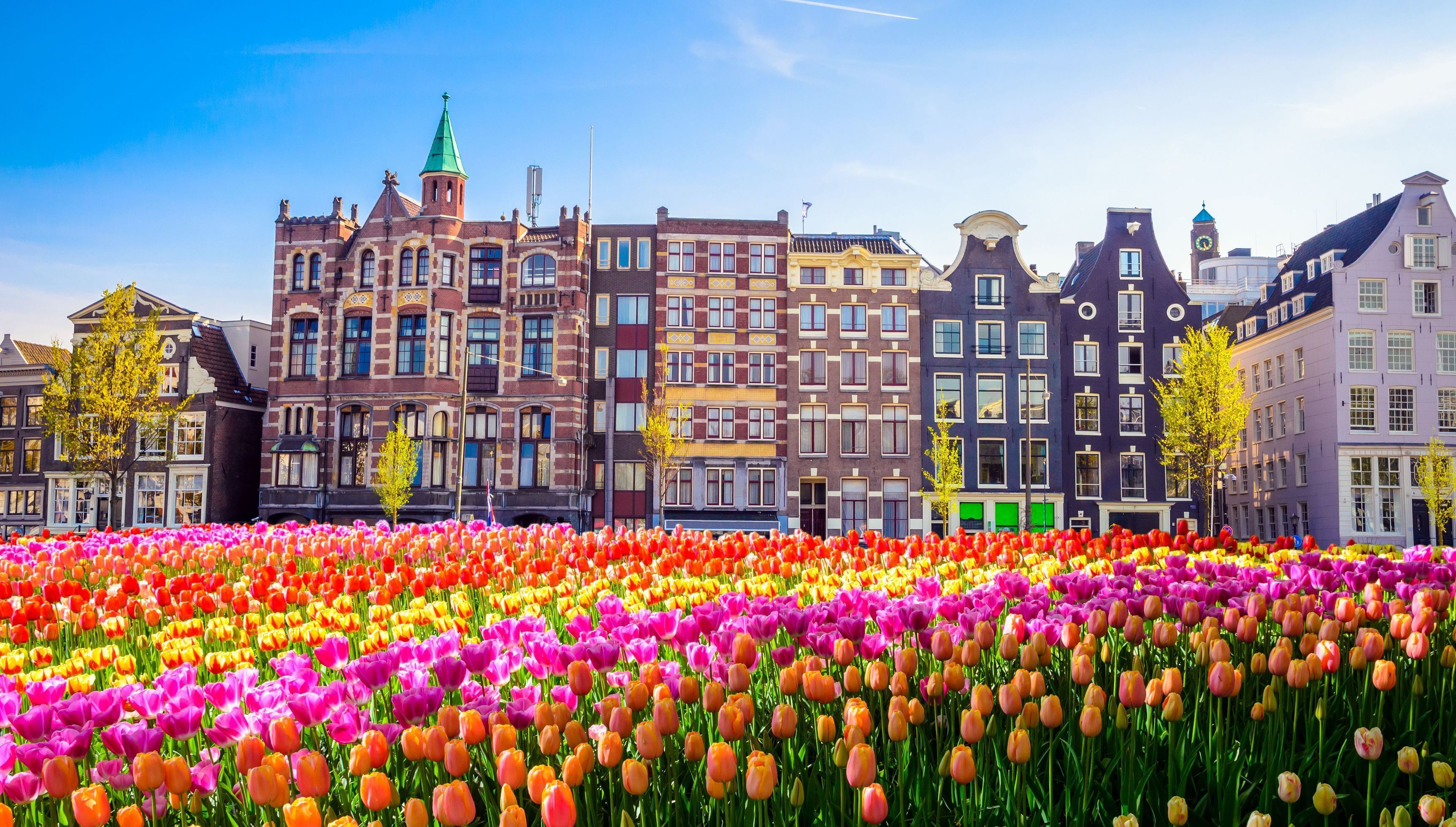
Die Niederlande (im Deutschen Plural; niederländisch Nederland und friesisch Nederlân, Singular) sind eines der vier autonomen Länder des Königreiches der Niederlande. Das überwiegend im nördlichen Westeuropa liegende Land wird dort durch die Nordsee im Norden und Westen, Belgien im Süden und Deutschland im Osten begrenzt. Die Hauptstadt der Niederlande ist Amsterdam, der Regierungssitz ist Den Haag.
Zu dem Gebiet der Niederlande, das in diesem Artikel dargestellt wird, gehören neben den zwölf Provinzen des europäischen Teils die Karibikinseln Bonaire, Sint Eustatius und Saba (einschließlich ihrer jeweiligen Nebeninseln), die Besondere Gemeinden des Landes sind. Diese Konstruktion besteht seit der Auflösung des Landes Niederländische Antillen im Jahre 2010. Weitere niederländische karibische Gebiete sind kein Teil des Landes Niederlande, sondern autonome Länder im Königreich der Niederlande. Dies sind die Länder Aruba, Curaçao und Sint Maarten.
Nach Zugehörigkeit zum Ostfrankenreich und zum Heiligen Römischen Reich gilt das Jahr 1581 als Geburtsstunde der Vereinigten Niederlande, die mit dem Westfälischen Frieden endgültig anerkannt wurde. Die Niederlande wurden zu einer Handels-, Kolonial- und Militär-Großmacht. Das 17. Jahrhundert wird als Goldenes Zeitalter beschrieben. Die Verfassung der Niederlande geht auf die Zeit des Wiener Kongresses 1814/15 zurück.
Zusammen mit Belgien und Luxemburg bilden die Niederlande die Benelux-Union. Die Niederlande sind Gründungsmitglied der Montanunion von 1951, aus der sich mehrere Nachfolger und 1992 die Europäische Union (EU) entwickelten.
Das Königreich der Niederlande, niederländisch Koninkrijk der Nederlanden, französisch Royaume des Pays-Bas, englisch Kingdom of the Netherlands, friesisch Keninkryk fan de Nederlannen, auf Papiamento Reino Hulandes, ist ein Staat in Europa und in der Karibik. Der Staat ist in vier Staatsteile gegliedert, die „Länder“ (niederländisch landen) genannt werden. Ein solches Land ist autonom und hat eine eigene Regierung und Währung. Gemeinsame Aufgaben des Königreichs bestehen vor allem in der Außen- und Sicherheitspolitik sowie in Angelegenheiten der Staatsangehörigkeit.
Die vier Länder sind:
- das europäische Land, das als Niederlande bekannt ist. Zu diesem Land gehören allerdings seit dem Jahr 2010 auch drei karibische Inseln als "besondere Gemeinden", die man Karibische Niederlande oder BES-eilanden (BES-Inseln) nennt: Bonaire, St. Eustatius und Saba.
- drei Länder in der Karibik: Aruba, Curaçao und Sint Maarten.
Das Königreich in diesem Sinne ist aus dem Kolonialreich der Niederlande entstanden. Nach der Unabhängigkeit Indonesiens 1949 waren dies noch Suriname in Südamerika sowie die karibischen Inseln, die damals als Niederländische Antillen zusammengefasst waren. Suriname wurde 1975 unabhängig, während die Niederländischen Antillen im Jahr 2010 aufgelöst wurden (Aruba wurde schon 1985 ein eigenständiges Land).
Die rechtliche Grundlage für das Königreich sind die Verfassung der Niederlande sowie seit 1954 das Statuut voor het Koninkrijk der Nederlanden. Letzteres regelt die Beziehungen zwischen den vier Ländern und die gemeinsame Beschlussfassung. Die drei Länder in der Karibik haben außerdem ihre eigenen Verfassungen, die in allen drei Ländern Staatsregeling heißen.
Das Königreich hat als gemeinsames Organ den Rijksministerraad. Dabei handelt es sich um das niederländische Kabinett, das um Vertreter aus den anderen drei Ländern erweitert wird. Gemeinsame Gesetze werden vom niederländischen Parlament nach Anhörung karibischer Vertreter beschlossen. Staatsoberhaupt des Königreichs und jedes einzelnen Landes ist der König der Niederlande.
在17世纪,荷兰是当时世界上最强大的海上霸主,曾被誉为海上马车夫。荷兰本土设12个省,下设443个市镇。首都设在阿姆斯特丹,但是其中央政府、国王居住办公地、所有的政府机关与外国使馆、最高法院和许多组织都在海牙。
荷兰王国(荷兰语:het Koninkrijk der Nederlanden;帕皮阿门托语:Reino Hulandes;英语:The Kingdom of the Netherlands),简称荷兰(Netherlands)[a],位于欧洲西北部的低地国家,是一个世袭君主立宪王国,由荷兰、阿鲁巴岛、库拉索岛和荷属圣马丁岛四个国家构成。荷兰是欧盟和北约成员国,面积约4.15万平方公里,人口1726万人(2018年),首都阿姆斯特丹市。
各个构成国在一些问题上独立执行,在其他方面合作执行。荷兰王国政府的权力仅限于国防、外交、国籍和引渡,除了上述权力以外,各构成国皆有完全的自主权和自治权。
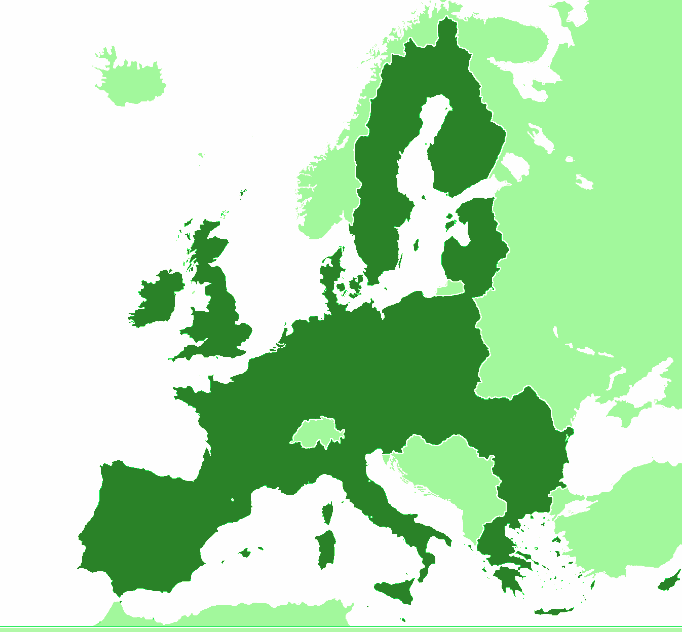

 *Track and field athletics
*Track and field athletics
 4x100 m Woman
4x100 m Woman
 *Track and field athletics
*Track and field athletics
 4x400 m Woman
4x400 m Woman
 Germany
Germany

 European Union
European Union
 History of the European Union
History of the European Union

 European Union
European Union
 *Founding states
*Founding states

 Geography
Geography
 Leichtathletik-Weltmeisterschaften
Leichtathletik-Weltmeisterschaften
 2001 Edmonton
2001 Edmonton
 Leichtathletik-Weltmeisterschaften
Leichtathletik-Weltmeisterschaften
 1997 Athens
1997 Athens

 Mitglieder der NATO
Mitglieder der NATO

 Party and government
Party and government
 Group of the twenty most important industrial and emerging countries
Group of the twenty most important industrial and emerging countries

 Party and government
Party and government
 Group of Seven,G7
Group of Seven,G7

 States of Europe
States of Europe
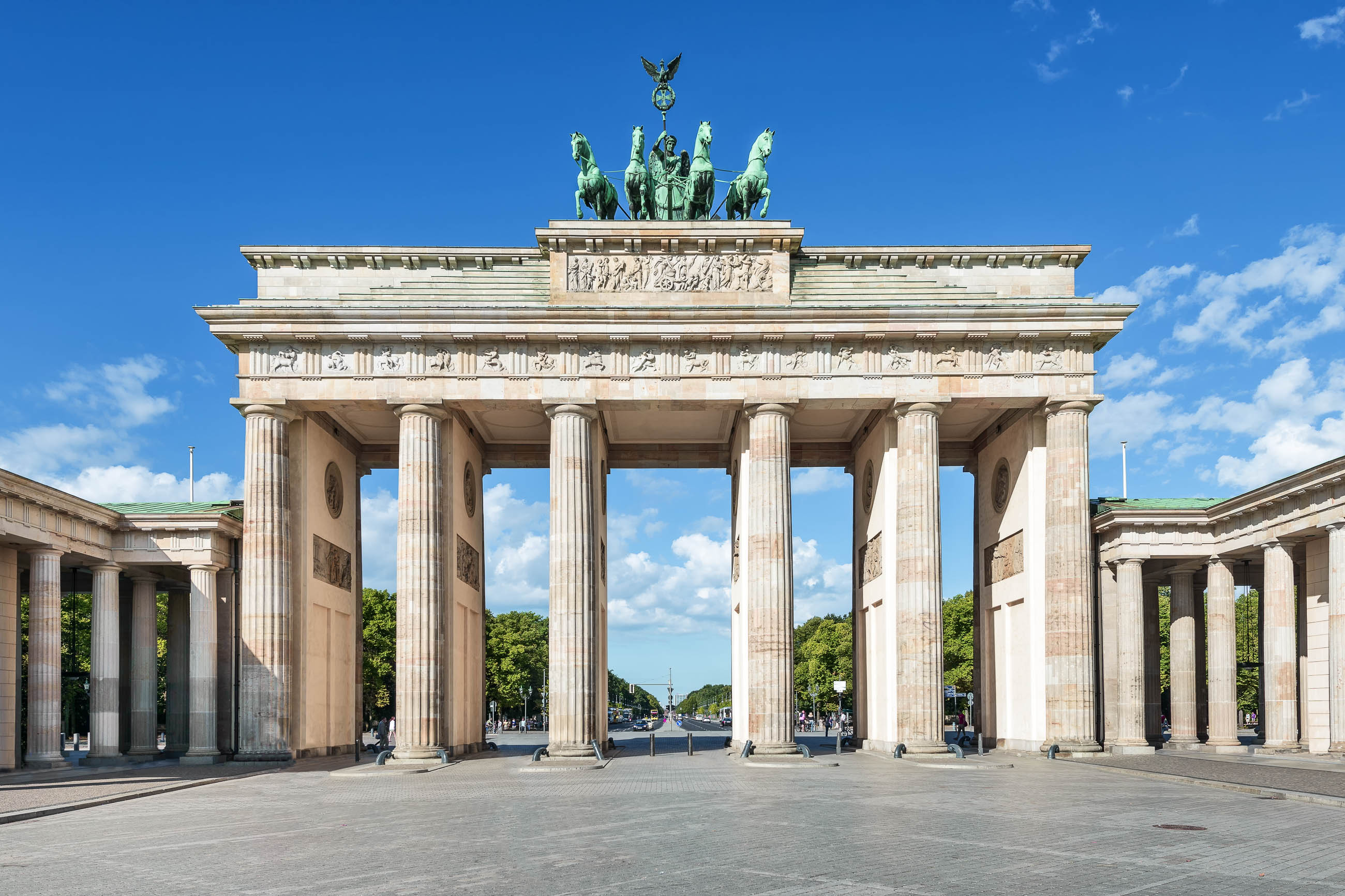
(Vollform: Bundesrepublik Deutschland) ist ein föderal verfasster Staat in Mitteleuropa, der aus den 16 deutschen Ländern besteht. Die Bundesrepublik ist ein freiheitlich-demokratischer Rechtsstaat[8] und stellt die jüngste Ausprägung des deutschen Nationalstaates dar.[9] Mit rund 82,8 Millionen Einwohnern (31. Dezember 2016) zählt Deutschland zu den dicht besiedelten Flächenstaaten.
An Deutschland grenzen neun Staaten, im Norden die Gewässer der Nord- und Ostsee und im Süden das Bergland der Alpen. Es liegt in der gemäßigten Klimazone. Bundeshauptstadt sowie bevölkerungsreichste deutsche Stadt ist Berlin. Weitere bedeutende Metropolen sind Hamburg, München, Köln, Frankfurt, Stuttgart und Düsseldorf; größter Ballungsraum ist das Ruhrgebiet. Deutschland gilt international als das Land mit der zweithöchsten Zahl von Einwanderern nach den Vereinigten Staaten (Stand 2015).[10][11] Seine Bevölkerung ist die zweitälteste und hat mit 1,47 Kindern pro Frau (2014) eine der niedrigsten Geburtenraten der Welt.[12]
Auf dem Territorium des heutigen Deutschlands wurden frühe Siedlungsformen von vor etwa 500.000 Jahren nachgewiesen, wie Funde vom Heidelbergmenschen, vom Neandertaler sowie von einigen der ältesten Kunstwerke der Menschheit aus der Altsteinzeit belegen. Seit der Antike ist die lateinische Bezeichnung Germania für das Siedlungsgebiet der Germanen bekannt, seit dem 4. Jahrhundert ist die Verwendung des Begriffes deutsch in althochdeutscher Form belegt. Das seit dem 10. Jahrhundert bestehende Heilige Römische Reich bestand aus vielen Herrschaftsgebieten und war mit dem 1815 nachfolgenden Deutschen Bund der Ursprung des föderalen deutschen Staates. Dieser entstand erstmals mit der Gründung des Deutschen Reichs im Jahr 1871, woraus eine rasche Wirtschaftsentwicklung vom Agrar- zum Industrieland folgte.
Nach dem Ersten Weltkrieg kam es infolge der Novemberrevolution 1918 zur Bildung der demokratischen Weimarer Republik und zum Friedensvertrag von Versailles. Der nationalsozialistischen Diktatur von 1933 bis 1945 samt verheerendem Zweitem Weltkrieg folgte eine Zeit der Veränderung und Teilung des Staates. Der Gründung der Bundesrepublik als demokratischer westdeutscher Teilstaat mit Inkrafttreten des Grundgesetzes am 24. Mai 1949 folgte wiederum die Gründung der sozialistischen DDR am 7. Oktober 1949 als ostdeutscher Teilstaat.[13] Nach der friedlichen Revolution 1989 folgte die Wiedervereinigung beider Landesteile am 3. Oktober 1990; seitdem wird der Tag der Deutschen Einheit als nationaler Feiertag begangen.
Deutschland ist Gründungsmitglied des Europarates und der Europäischen Union sowie deren bevölkerungsreichstes Land. Mit 18 anderen EU-Mitgliedstaaten bildet es eine Währungsunion, die Eurozone. Es ist Mitglied der UN, der OECD, der OSZE, der NATO, der G7 und der G20. Die Bundesrepublik Deutschland gilt als einer der politisch einflussreichsten Staaten Europas und ist ein gesuchtes Partnerland auf globaler Ebene.[14]
Gemessen am Bruttoinlandsprodukt ist Deutschland die größte Volkswirtschaft Europas und die viertgrößte der Welt.[5] Im Jahr 2015 war es die drittgrößte Export- und Importnation.[15] Es ist marktwirtschaftlich geprägt. Aufgrund der Rohstoffarmut und der Automatisierung der Industrie entwickelt sich das Land, das stark von der Qualität seines Bildungssystems abhängt, zunehmend zur Informations- und Wissensgesellschaft.[16] Gemäß dem Index der menschlichen Entwicklung zählt Deutschland zu den sehr hoch entwickelten Ländern.[17]
Die deutsche Sprache ist die meistgesprochene Muttersprache und nach Englisch die zweithäufigste Fremdsprache in der Europäischen Union; die Zahl ihrer Sprecher rangiert weltweit auf dem zehnten Platz. Die Kultur Deutschlands hat vielschichtige und weltbekannte Ausdrucksformen hervorgebracht, etwa in der Kunst und Architektur, der Musik, der Philosophie, der Filmkultur, der Küche, der Traditionspflege, im Design, im Sport, in der Wissenschaft und der Wirtschaft. Das UNESCO-Welterbe in Deutschland sowie die Vielfalt der Kulturdenkmale und Altstädte ist umfangreich. Eine Vielzahl von National- und Naturparks sind im Land ausgewiesen.
德意志联邦共和国(德语:Bundesrepublik Deutschland、![]() 发音(帮助·信息))简称德国(德语:Deutschland)[参 7],是一个位于欧洲的联邦议会共和制国家,国家元首为联邦总统,政府首脑为联邦总理。它由16个联邦州组成,首都与最大城市为柏林。其国土面积约35.7万平方公里,南北距离为876公里,东西相距640公里,从北部的北海与波罗的海延伸至南部的阿尔卑斯山[参 8]。气候温和,季节分明。德国人口约8,180万,为欧洲联盟中人口最多的国家,也是世界第二大移民目的地,仅次于美国[参 9]。
发音(帮助·信息))简称德国(德语:Deutschland)[参 7],是一个位于欧洲的联邦议会共和制国家,国家元首为联邦总统,政府首脑为联邦总理。它由16个联邦州组成,首都与最大城市为柏林。其国土面积约35.7万平方公里,南北距离为876公里,东西相距640公里,从北部的北海与波罗的海延伸至南部的阿尔卑斯山[参 8]。气候温和,季节分明。德国人口约8,180万,为欧洲联盟中人口最多的国家,也是世界第二大移民目的地,仅次于美国[参 9]。
在50万年前的旧石器时代晚期,海德堡人及其后代尼安德特人生活在今德国中部。自古典时代以来各日耳曼部族开始定居于今日德国的北部地区。公元1世纪时,有罗马人著作的关于“日耳曼尼亚”的历史记载。在公元4到7世纪的民族迁徙期,日耳曼部族逐渐向欧洲南部扩张。自公元10世纪起,德意志领土组成神圣罗马帝国的核心部分[参 10]。16世纪时,德意志北部地区成为宗教改革中心。1871年,在普鲁士主导之下,多数德意志邦国统一并加入德意志帝国。在第一次世界大战和1918-1919年德国革命后,德意志帝国解体,议会制的魏玛共和国取而代之。1933年国家社会主义党获取政权并建立独裁统治,最终导致第二次世界大战及系统性种族灭绝的发生。在战败并经历同盟国军事占领后,两个德国分别建立:德意志民主共和国和德意志联邦共和国。在1990年10月3日重新统一成为现在的德国。
德国是世界大国之一,其国内生产总值以国际汇率计居世界第四,以购买力平价计居世界第五。其诸多工业和科技部门位居世界前列,例如全球驰名的德国车厂、精密部件等,为世界第三大出口国。德国为发达国家,生活水平居世界前列。德国人也以热爱大自然闻名,都市绿化率极高,也是欧洲再生能源大国,是可持续发展经济的样板,除了强调环境保护与自然生态保育,在人为饲养活体的态度十分严谨,不但获得大量外汇和资讯优势,其动物保护法律管束、生命教育水准也是首屈一指的,在高等教育方面并提供免费大学教育[参 11],并具备完善的社会保障制度和医疗体系,催生出拜尔等大药厂。
德国为1993年欧洲联盟建立时的创始国之一,为申根区一部分,并于1999年推动欧元区的建立。德国亦为联合国、北大西洋公约组织、八国集团、20国集团及经济合作与发展组织成员。其军事开支总额居世界第九。
德语是欧盟境内使用人数最多的母语。德国文化的丰富层次和对世界的影响表现在其美术和建筑、音乐、哲学以及电影等等。德国的文化遗产主要以老城为代表。另外国家公园和自然公园共计有上百处。
ドイツ連邦共和国(ドイツれんぽうきょうわこく、独: Bundesrepublik Deutschland)、通称ドイツ(独: Deutschland)は、中央ヨーロッパ西部に位置する連邦共和制国家。首都および最大の都市はベルリン州。南がスイスとオーストリア、北にデンマーク、西をオランダとベルギーとルクセンブルク、東はポーランドとチェコとそれぞれ国境を接する。
欧州大陸における政治的・経済的な主要国であり、歴史上、多くの文化・科学・技術分野における重要な指導国でもある。人口は8300万人で、これは欧州連合において最大である。同国は限定的主権を有する16の州によって構成される。国土の総面積は35万7386平方キロメートルであり、主に温暖な気候に属する。かつて「西ドイツ」と呼ばれていた時代は「西欧」に分類されていたが、東ドイツ(ドイツ民主共和国)の民主化と東西ドイツの統一により「中欧」または「中西欧」に分類されるようになっている。
ドイツ経済の規模は、対米ドル名目為替レートによって計算される米ドル建て名目GDP(MERベースGDP)で世界第4位であり、対米ドル購買力平価によって計算される米ドル建て実質GDP(PPPベースGDP)で世界第5位である。技術及び産業分野における世界的なリーダーとして、世界第3位の輸出国かつ世界第3位の輸入国である。世界最古のユニバーサルヘルスケア制度を含む、包括的な社会保障を特色とする非常に高い生活水準が実現されている先進国である。豊かな政治及び文化の歴史で知られ、影響力ある多数の芸術家、音楽家、映画人、哲学者、科学者及び技術者、起業家の故国である。
1993年に欧州連合へ発展した1957年の欧州諸共同体の原加盟国であるほか、1995年以来シェンゲン圏の一員で、1999年以降はユーロ圏の一員でもある。また、国際連合、欧州評議会、NATO、G7、G20、OECDの主要なメンバーであり、欧州の大国「ビッグ4」や列強の一国に数えられる。アメリカ合衆国に次ぎ、ドイツは世界第2位の移住地である[1]。
Germany (German: Deutschland, pronounced [ˈdɔʏtʃlant] (![]() listen)), officially the Federal Republic of Germany,[e] is a country in Central Europe. It is the second-most populous country in Europe after Russia, and the most populous member state of the European Union. Germany is situated between the Baltic and North seas to the north, and the Alps to the south; it covers an area of 357,022 square kilometres (137,847 sq mi), with a population of over 83 million within its 16 constituent states. It borders Denmark to the north, Poland and the Czech Republic to the east, Austria and Switzerland to the south, and France, Luxembourg, Belgium, and the Netherlands to the west. The nation's capital and largest city is Berlin, and its financial centre is Frankfurt; the largest urban area is the Ruhr.
listen)), officially the Federal Republic of Germany,[e] is a country in Central Europe. It is the second-most populous country in Europe after Russia, and the most populous member state of the European Union. Germany is situated between the Baltic and North seas to the north, and the Alps to the south; it covers an area of 357,022 square kilometres (137,847 sq mi), with a population of over 83 million within its 16 constituent states. It borders Denmark to the north, Poland and the Czech Republic to the east, Austria and Switzerland to the south, and France, Luxembourg, Belgium, and the Netherlands to the west. The nation's capital and largest city is Berlin, and its financial centre is Frankfurt; the largest urban area is the Ruhr.
Various Germanic tribes have inhabited the northern parts of modern Germany since classical antiquity. A region named Germania was documented before AD 100. In the 10th century, German territories formed a central part of the Holy Roman Empire. During the 16th century, northern German regions became the centre of the Protestant Reformation. Following the Napoleonic Wars and the dissolution of the Holy Roman Empire in 1806, the German Confederation was formed in 1815. In 1871, Germany became a nation-state when most of the German states unified into the Prussian-dominated German Empire. After World War I and the German Revolution of 1918–1919, the Empire was replaced by the semi-presidential Weimar Republic. The Nazi seizure of power in 1933 led to the establishment of a dictatorship, World War II, and the Holocaust. After the end of World War II in Europe and a period of Allied occupation, Germany was divided into the Federal Republic of Germany, generally known as West Germany, and the German Democratic Republic, East Germany. The Federal Republic of Germany was a founding member of the European Economic Community and the European Union, while the German Democratic Republic was a communist Eastern Bloc state and member of the Warsaw Pact. After the fall of communism, German reunification saw the former East German states join the Federal Republic of Germany on 3 October 1990—becoming a federal parliamentary republic.
Germany is a great power with a strong economy; it has the largest economy in Europe, the world's fourth-largest economy by nominal GDP, and the fifth-largest by PPP. As a global leader in several industrial, scientific and technological sectors, it is both the world's third-largest exporter and importer of goods. As a developed country, which ranks very high on the Human Development Index, it offers social security and a universal health care system, environmental protections, and a tuition-free university education. Germany is a member of the United Nations, NATO, the G7, the G20, and the OECD. It has the third-greatest number of UNESCO World Heritage Sites.
L'Allemagne (/almaɲ/ ; en allemand : Deutschland /ˈdɔʏtʃlant/ Écouter), en forme longue la République fédérale d'Allemagneb, abrégée en RFA (en allemand : Bundesrepublik Deutschland /ˈbʊn.dəs.ʁe.puˌblik ˈdɔʏtʃ.lant/ Écouter, abrégée en BRD), est un État d'Europe centrale, et selon certaines définitions d'Europe de l'Ouest, entouré par la mer du Nord, le Danemark et la mer Baltique au nord, par la Pologne à l'est-nord-est, par la Tchéquie à l'est-sud-est, par l'Autriche au sud-sud-est, par la Suisse au sud-sud-ouest, par la France au sud-ouest, par la Belgique et le Luxembourg à l'ouest, enfin par les Pays-Bas à l'ouest-nord-ouest. Décentralisée et fédérale, l'Allemagne compte quatre métropoles de plus d'un million d'habitants : la capitale Berlin, ainsi que Hambourg, Munich et Cologne. Le siège du gouvernement est situé dans la ville de Berlin et dans la ville fédérale de Bonn. Francfort-sur-le-Main est considérée comme la capitale financière de l'Allemagnec : dans cette ville se trouve le siège de la Banque centrale européenne.
Beaucoup de peuples germaniques occupent le Nord du territoire actuel depuis l'Antiquité classique. Durant ce que l'on nomme les invasions barbares, les tribus germaniques se rapprochent du Sud de ce territoire. À partir du Xe siècle, les territoires forment la partie centrale du Saint-Empire romain germanique. Au XVIe siècle, le Nord de l'Allemagne est au cœur de la réforme protestante. Le pangermanisme entraîne l'unification des États allemands en 1871 pour former l'Empire allemand. Après la Première Guerre mondiale, et la révolution allemande de 1918-1919, l'Empire est remplacé par la république parlementaire de Weimar. L'accès au pouvoir des nazis en 1933 mène à la Seconde Guerre mondiale, au cours de laquelle le régime totalitaire connu sous le nom de Troisième Reich, fondé sur un racisme et un antisémitisme singulier, et dirigé par le dictateur Adolf Hitler, perpètre des crimes de masse en Europe, dont la Shoah, et laisse le pays en ruines. Après sa défaite militaire en 1945, l'Allemagne perd des territoires et — par la volonté des vainqueurs alliés qui entrent dans la « guerre froide » — est contrainte de se scinder en deux nations : à l'ouest un État démocratique, la République fédérale d'Allemagne (en abrégé RFA) et, à l'est, la République démocratique allemande (en abrégé RDA) sous emprise de l'Union soviétique. Le mur de Berlin — qui symbolise cette division dans l'ancienne capitale — tombe le 9 novembre 1989 et l'Allemagne est à nouveau réunifiée le 3

 European Union
European Union
 History of the European Union
History of the European Union

 European Union
European Union
 *Founding states
*Founding states
 Eurovision Song Contest,ESC
Eurovision Song Contest,ESC

 Financial
Financial
 ***Global Financial Center
***Global Financial Center

 Geography
Geography

 History
History
 M 1500 - 2000 AD
M 1500 - 2000 AD

 History
History
 N 2000 - 2100 AD
N 2000 - 2100 AD

 International cities
International cities
 *European Capital of Culture
*European Capital of Culture

 International cities
International cities
 European city
European city
 Luxembourg
Luxembourg

 Mitglieder der NATO
Mitglieder der NATO

 States of Europe
States of Europe
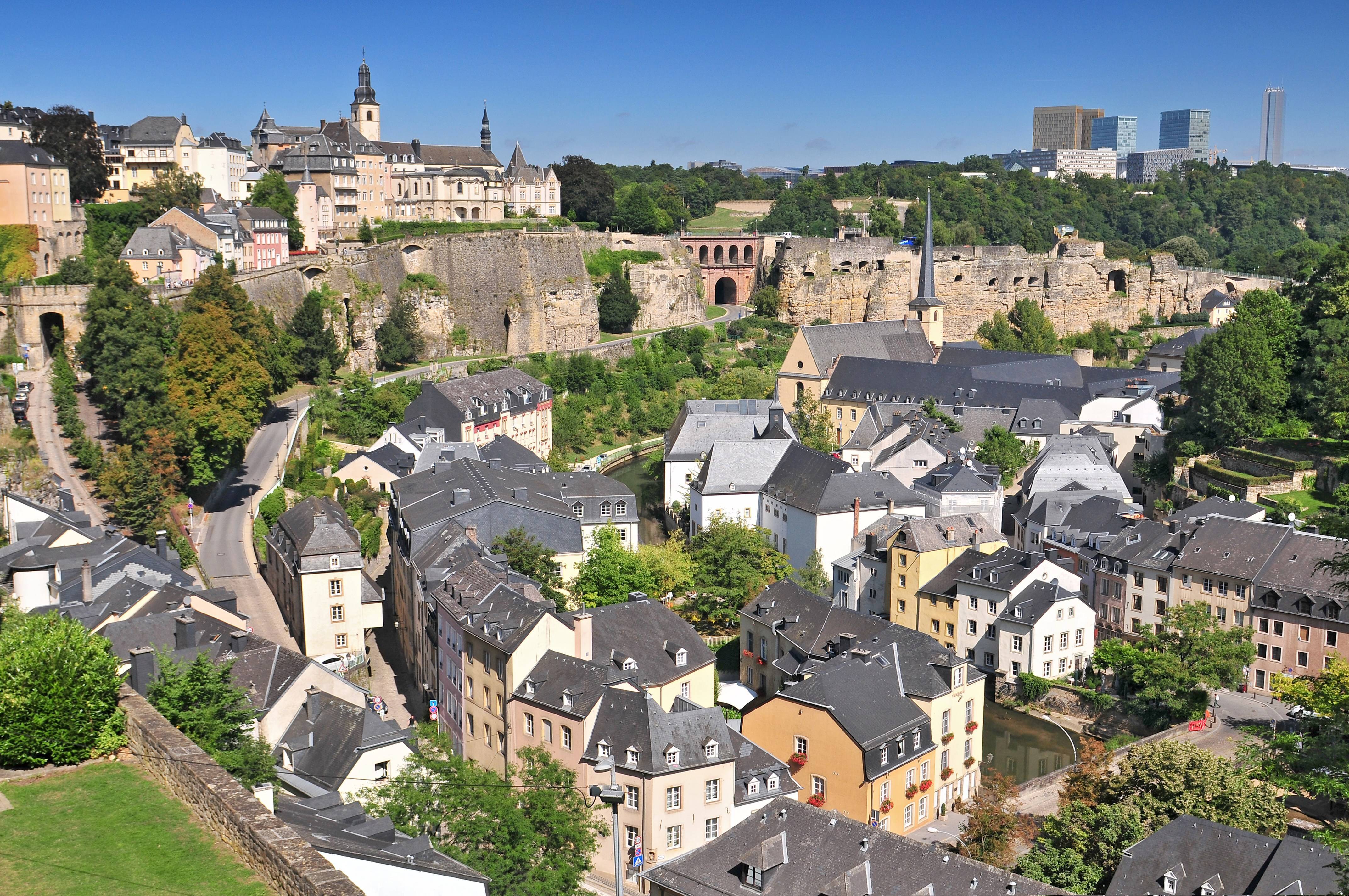

Das Großherzogtum Luxemburg (luxemburgisch Groussherzogtum Lëtzebuerg [ˈgʀəʊsˌhɛχtsoːktuːm ˈlətsəbuəɕ], französisch Grand-Duché de Luxembourg [ɡʁɑ̃ dyʃe də lyksɑ̃buʁ]) ist ein demokratischer Staat in Form einer parlamentarischen Monarchie[1] im Westen Mitteleuropas. Es ist das letzte Großherzog- bzw. Großfürstentum (von einst zwölf) in Europa. Das Land gehört zum mitteldeutschen Sprachraum. Landessprache ist Luxemburgisch, Verwaltungs- und Amtssprachen sind Französisch, Deutsch und Luxemburgisch. Gemeinsam mit seinem Nachbarn Belgien und mit den Niederlanden bildet Luxemburg die Beneluxstaaten.
卢森堡大公国(卢森堡语:Groussherzogtum Lëtzebuerg,法语:Grand-Duché de Luxembourg,德语:Großherzogtum Luxemburg),简称“卢森堡”,位于欧洲西北部,被邻国法国、德国和比利时包围,是一个内陆小国,也是现今欧洲大陆仅存的大公国,首都卢森堡市。因国土小、古堡多,又有“袖珍王国”、“千堡之国”的称呼 。
卢森堡地形富于变化,在历史上又处于德法要道,地势险要,一直是西欧重要的军事要塞,有北方直布罗陀的称号 。
卢森堡是一个高度发达的资本主义国家,也是欧盟和北约创始成员国之一,拥有欧盟多个下设机构,如欧洲法院、欧洲审计院以及欧洲投资银行,被称为继布鲁塞尔和斯特拉斯堡之后的欧盟“第三首都”。同时是高度发达的工业国家,还是欧元区内最重要的私人银行中心,及全球第二大仅次于美国的投资信托中心。金融、广播电视、钢铁是其三大经济支柱产业,该国失业率极低,人均寿命80岁。
卢森堡大公国(卢森堡语:Groussherzogtum Lëtzebuerg[注 1];法语:Grand-Duché de Luxembourg; 德语:Großherzogtum Luxemburg[注 2]),通称卢森堡(卢森堡语:Lëtzebuerg;法语:Luxembourg;德语:Luxemburg),被邻国法国、德国和比利时包围,是一个位于欧洲的内陆国家,也是现今欧洲大陆仅存的大公国,首都卢森堡市。卢森堡是欧盟成员国,因境内有欧洲法院、欧洲审计院、欧洲投资银行等多个欧盟机构被称为继布鲁塞尔和斯特拉斯堡之后的欧盟“第三首都”。
ルクセンブルク大公国(ルクセンブルクたいこうこく)、通称ルクセンブルクは、西ヨーロッパに位置する立憲君主制国家。首都は国名と同名のルクセンブルク市。隣接国は、南のフランス、西と北のベルギー、東のドイツである。ベルギー、オランダと併せてベネルクスと呼ばれる。
Luxembourg (/ˈlʌksəmbɜːrɡ/ ( listen)) (Luxembourgish: Lëtzebuerg [ˈlətsəbuə̯ɕ] (
listen)) (Luxembourgish: Lëtzebuerg [ˈlətsəbuə̯ɕ] ( listen); French: Luxembourg ; German: Luxemburg), officially the Grand Duchy of Luxembourg,[note 2] is a small landlocked country in western Europe. It is bordered by Belgium to the west and north, Germany to the east, and France to the south. Its capital, Luxembourg City, together with Brussels and Strasbourg, is one of the three official capitals of the European Union[6] and the seat of the European Court of Justice, the highest judicial authority in the EU. Its culture, people, and languages are highly intertwined with its neighbours, making it essentially a mixture of French and German cultures, as evident by the nation's three official languages: French, German, and the national language, Luxembourgish (sometimes considered a dialect of German). The repeated invasions by Germany, especially in World War II, resulted in the country's strong will for mediation between France and Germany and, among other things, led to the foundation of the European Union.[7]
listen); French: Luxembourg ; German: Luxemburg), officially the Grand Duchy of Luxembourg,[note 2] is a small landlocked country in western Europe. It is bordered by Belgium to the west and north, Germany to the east, and France to the south. Its capital, Luxembourg City, together with Brussels and Strasbourg, is one of the three official capitals of the European Union[6] and the seat of the European Court of Justice, the highest judicial authority in the EU. Its culture, people, and languages are highly intertwined with its neighbours, making it essentially a mixture of French and German cultures, as evident by the nation's three official languages: French, German, and the national language, Luxembourgish (sometimes considered a dialect of German). The repeated invasions by Germany, especially in World War II, resulted in the country's strong will for mediation between France and Germany and, among other things, led to the foundation of the European Union.[7]
With an area of 2,586 square kilometres (998 sq mi), it is one of the smallest sovereign states in Europe.[8] In 2016, Luxembourg had a population of 576,249, which makes it one of the least-populous countries in Europe,[9] but by far the one with the highest population growth rate.[10] Foreigners account for nearly half of Luxembourg's population.[11] As a representative democracy with a constitutional monarch, it is headed by Grand Duke Henri and is the world's only remaining grand duchy. Luxembourg is a developed country, with an advanced economy and one of the world's highest GDP (PPP) per capita. The City of Luxembourg with its old quarters and fortifications was declared a UNESCO World Heritage Site in 1994 due to the exceptional preservation of the vast fortifications and the old city.[12]
The history of Luxembourg is considered to begin in 963, when count Siegfried I acquired a rocky promontory and its Roman-era fortifications known as Lucilinburhuc, ′little castle′, and the surrounding area from the Imperial Abbey of St. Maximin in nearby Trier.[13][14] Siegfried's descendants increased their territory through marriage, war and vassal relations. At the end of the 13th century, the Counts of Luxembourg reigned over a considerable territory. [15] In 1308, Henry VII, Count of Luxembourg became King of the Germans and Holy Roman Emperor. The House of Luxembourg produced four Holy Roman Emperors at the high time of the Middle Ages. In 1354, Charles IV elevated the County to the Duchy of Luxembourg. Since Sigismund had no male heir, the Duchy became part of the Burgundian Circle and then one of the Seventeen Provinces of the Habsburg Netherlands.[16] Over the centuries, the City and Fortress of Luxembourg, of great strategic importance situated between the Kingdom of France and the Habsburg territories, was gradually built up to be one of the most reputed fortifications in Europe. After belonging to both the France of Louis XIV and the Austria of Maria Theresia, Luxembourg became part of the First French Republic and Empire under Napoleon.[17]
The present-day state of Luxembourg first emerged at the Congress of Vienna in 1815. The Grand-Duchy, with its powerful fortress, became an independent state under the personal possession of William I of the Netherlands with a Prussian garrison to guard the city against another invasion from France. [18] In 1839, following the turmoil of the Belgian Revolution, the purely Oil-speaking part of Luxembourg was ceded to Belgium and the Luxembourgish-speaking part (except the Arelerland, the area around Arlon) became what is the present state of Luxembourg. [19]
The steel industry exploiting the Red Lands' rich iron-ore grounds in the beginning of the 20th century drove the country's industrialisation. ArcelorMittal, the world's largest steel producer with headquarters in Luxembourg City, is still a reminder of these times. After the decline of the steel industry in the 1970s, the country focused on establishing itself as a global financial centre and developed into the banking hub it is reputed for. Since the beginning of the 21st century, its governments have focused on developing the country into a knowledge economy, with the founding of the University of Luxembourg and a national space programme, projecting the first involvement in a robotic lunar expedition by 2020.[20]
Luxembourg is a founding member of the European Union, OECD, United Nations, NATO, and Benelux. The city of Luxembourg, which is the country's capital and largest city, is the seat of several institutions and agencies of the EU. Luxembourg served on the United Nations Security Council for the years 2013 and 2014, which was a first in the country's history.[21] In 2016 Luxembourgish citizens had visa-free or visa-on-arrival access to 172 countries and territories, ranking the Luxembourgish passport 15th in the world, tied with countries such as Canada and Switzerland.[22]
Le Luxembourg, en forme longue le Grand-Duché de Luxembourg2,b,c ou le grand-duché de Luxembourgd, en luxembourgeois Lëtzebuerg et Groussherzogtum Lëtzebuerg, en allemand Luxemburg et Großherzogtum Luxemburg, est un pays d'Europe de l'Ouest sans accès à la mere Il est bordé par la Belgique à l'ouest et au nord, l'Allemagne à l'est, et la France au sud. Il comprend deux régions principales : l'Oesling au nord, qui est une partie du massif des Ardennes, et le Gutland au sud, prolongement de la Lorraine au sens géologique du terme. Le Luxembourg compte 602 005 habitants au 1er janvier 20181, et s'étend sur une superficie de 2 586 km2, faisant de lui l'une des plus petites nations souveraines d'Europe.
Le Luxembourg est une démocratie représentative et une monarchie constitutionnelle avec un grand-duc pour chef d'État, faisant du pays le seul grand-duché encore existant. Son économie dynamique en fait un des pays les plus riches et des plus prospères du monde, avec le PIB par habitant le plus élevé du monde selon le FMI en 2014. L'économie est principalement centrée sur les activités financières (environ la moitié du produit intérieur brut), favorisée par une fiscalité attractive voire dérisoire dans certains domaines (quasi-exonération d'impôts pour les bénéfices issus de l'exploitation de brevets ou de logiciels). La localisation centrale du territoire luxembourgeois en Europe a historiquement fait de lui un lieu d'une grande importance stratégique pour de nombreuses puissances, depuis sa fondation en tant que fortin romain7, son accueil d'un château franc durant le Haut Moyen Âge, et son rôle de bastion pour le chemin des Espagnols entre les XVIe et XVIIe siècles.
Le Luxembourg est le plus petit membre fondateur de l'Union européenne, de la zone euro, de l'OTAN, de l'OCDE, de l'ONU, de l'OSCE, du Conseil de l'Europe8,9,10,11 et du Benelux, reflétant son consensus politique en faveur de l'intégration économique, politique et militaire. La ville de Luxembourg, sa capitale et sa plus grande ville, est le siège de plusieurs établissements et institutions de l'UE. En 2012, le Luxembourg a été élu pour la première fois de son histoire à un siège temporaire au Conseil de sécurité des Nations unies. En raison de sa position géographique, la culture luxembourgeoise est une fusion de l'Europe germanique et romane, intégrant chacune des deux. De ce fait, le Luxembourg est un pays trilingue : le luxembourgeois, le français et l'allemand sont les trois langues officielles et, depuis 1984, le luxembourgeois a légalement le statut de « langue nationale »12.
Il Granducato di Lussemburgo (in francese: le Grand-Duché de Luxembourg; in lussemburghese: Groussherzogtum Lëtzebuerg; in tedesco: Großherzogtum Luxemburg) è un paese membro dell'Unione europea situato tra Germania, Francia e Belgio. È uno stato senza sbocco sul mare.
Membro fondatore dell'Unione europea, della NATO, del Benelux e delle Nazioni Unite, la sua capitale, l'omonima città di Lussemburgo, è sede di numerose istituzioni e agenzie europee oltre ad essere uno snodo finanziario di primaria importanza.
È l'unico granducato rimasto al mondo.
Luxemburgo, oficialmente denominado Gran Ducado de Luxemburgo (luxemburgués: Groussherzogtum Lëtzebuerg, francés: Grand-Duché de Luxembourg, alemán: Großherzogtum Luxemburg), es un pequeño país de Europa Central que forma parte de la Unión Europea. Se trata de un Estado sin litoral, rodeado por Francia, Alemania y Bélgica. Luxemburgo cuenta con una población de medio millón de habitantes sobre un área de 2586 kilómetros cuadrados.1
El gobierno de Luxemburgo es una monarquía constitucional y parlamentaria, siendo el único gran ducado soberano en la actualidad. El Estado tiene una economía altamente desarrollada, con el mayor producto interior bruto por cápita del mundo de acuerdo al Banco Mundial, y el segundo de acuerdo al Fondo Monetario Internacional.
Luxemburgo es miembro de la Unión Europea, la Organización del Tratado del Atlántico Norte, la Organización para la Cooperación y el Desarrollo Económico, las Naciones Unidas y el Benelux, reflejando la orientación política a favor de la integración económica, política y militar. Su capital, Luxemburgo, es sede de numerosas instituciones y agencias de la Unión Europea.
Luxemburgo posee culturas y tradiciones diversas por encontrarse entre la Europa romana y la Europa germánica. El país tiene tres lenguas oficiales: alemán, francés y luxemburgués. La localidad Schengen, que dio su nombre al espacio de Schengen, está ubicada en Luxemburgo.
Люксембу́рг (люксемб. Lëtzebuerg), официально Вели́кое Ге́рцогство Люксембу́рг (люксемб. Groussherzogtum Lëtzebuerg, фр. Grand-Duché de Luxembourg, нем. Großherzogtum Luxemburg) — государство (великое герцогство) в Западной Европе. Граничит с Бельгией на севере, на западе и на юге с Францией, на востоке с Германией, не имеет выхода к морю. Название происходит от древневерхненемецкого «lucilinburch» — «малый город». Общая площадь Люксембурга составляет 2586,4 км², что делает его одним из самых маленьких суверенных государств в Европе[5]. Население на 1 января 2018 года составляет 602 005 человек[2].
Член Европейского союза с 1957 года, также является членом НАТО, ОЭСР и ООН. Вместе с Бельгией и Нидерландами входит в состав Бенилюкса.
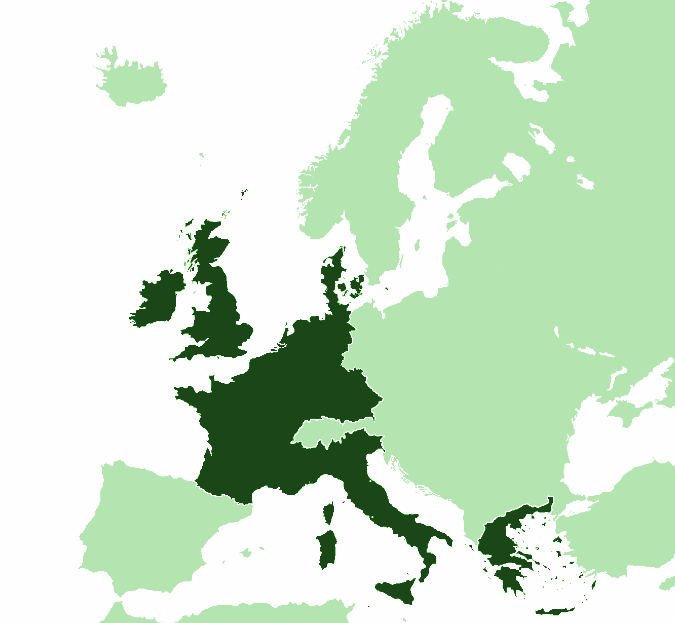
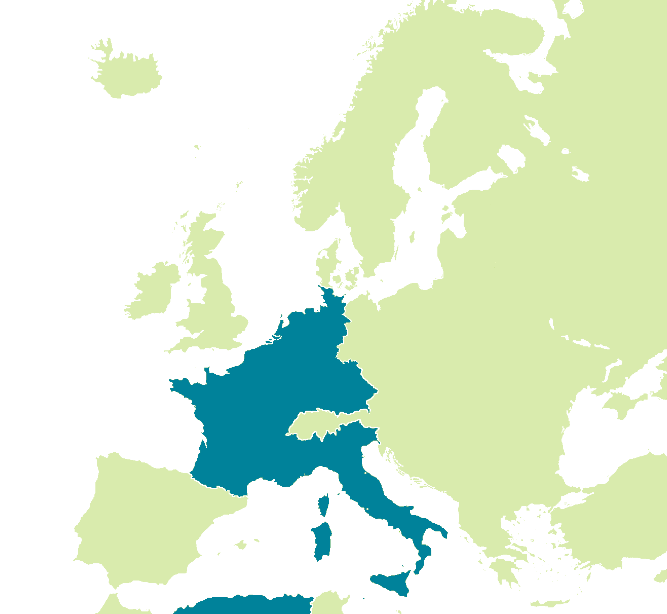

 European Union
European Union
 History of the European Union
History of the European Union

 European Union
European Union
 *Founding states
*Founding states

 Geography
Geography
 Italy
Italy

 Mitglieder der NATO
Mitglieder der NATO

 Party and government
Party and government
 Group of the twenty most important industrial and emerging countries
Group of the twenty most important industrial and emerging countries

 Party and government
Party and government
 Group of Seven,G7
Group of Seven,G7

 States of Europe
States of Europe

Italien (italienisch Italia [iˈtaːlja], amtlich Italienische Republik, italienisch Repubblica Italiana [reˈpubblika itaˈljaːna]) ist ein Staat in Südeuropa; seine Hauptstadt ist Rom.
Das italienische Staatsgebiet liegt zum größten Teil auf der vom Mittelmeer umschlossenen Apenninhalbinsel und der Po-Ebene sowie im südlichen Gebirgsteil der Alpen. Der Staat grenzt an Frankreich, die Schweiz, Österreich und Slowenien. Die Kleinstaaten Vatikanstadt und San Marino sind vollständig vom italienischen Staatsgebiet umschlossen. Neben den großen Inseln Sizilien und Sardinien sind mehrere Inselgruppen vorgelagert.
Als Kreuzweg der Zivilisationen des Mittelmeerraumes ist der italienische Beitrag zum kulturellen und historischen Erbe Europas und der Welt beachtenswert, das Gebiet des heutigen Italien war in der Antike die Kernregion des Römischen Reiches, die oberitalienische Toskana war das Kernland der Renaissance, ihr folgte von Rom ausgehend die Epoche des Barock.
Mit dem Risorgimento entstand der moderne italienische Nationalstaat: Von 1861 bis 1946 bestand unter dem Haus Savoyen das Königreich Italien, das rapide industrialisiert wurde, zu einer europäischen Großmacht aufstieg und ab den 1880er Jahren ein Kolonialreich in Nord- und Ostafrika errichtete. Die kostspielige und verlustreiche Teilnahme am Ersten Weltkrieg von 1915 bis 1918 führte zwar zur Vergrößerung des Staatsgebietes, aber auch zu schweren sozialen Unruhen und ebnete den italienischen Faschisten unter Benito Mussolini den Weg zur Macht. Das faschistische Regime herrschte von 1922 bis 1943/45 über Italien und führte das Land 1940 auf der Seite der Achsenmächte in den Zweiten Weltkrieg. Die Kriegsniederlage führte zum Verlust der Kolonien und zu vergleichsweise geringfügigen Gebietsabtretungen an den Nachbarstaat Jugoslawien. Im Juni 1946 beendete eine Volksabstimmung die Monarchie; die heutige Republik wurde ausgerufen.
Italien ist Mitinitiator der Europäischen Integration und Gründungsmitglied der Europäischen Union, des Europarates und der Lateinischen Union. Das Land ist Mitglied der G7, der G20, der NATO, der Vereinten Nationen (UNO), der Organisation für wirtschaftliche Zusammenarbeit und Entwicklung (OECD) und der Welthandelsorganisation (WTO).
Italien zählt laut Index der menschlichen Entwicklung als Industriestaat zu den höchstentwickelten Ländern der Erde[4] und ist gemessen am nominalen Bruttoinlandsprodukt die achtgrößte Volkswirtschaft der Welt.[5] Das Land genießt einen hohen Lebensstandard sowie Bildungsgrad und besitzt eine der höchsten Lebenserwartungen.[6] Italien ist das Land mit den meisten Welterbestätten der UNESCO (58)[7] und mit rund 65 Millionen Touristen jährlich eines der meistbesuchten Länder der Welt.[8]
意大利共和国(意大利语:Repubblica Italiana[注 1]),通称意大利(Italia),是欧洲主权国家,主要由位于南欧的靴型意大利半岛及两个地中海岛屿西西里岛和撒丁岛所组成。意大利北方的阿尔派恩山地区与法国、瑞士、奥地利以及斯洛文尼亚接壤,其领土包围着两个微型国家——圣马力诺和梵蒂冈及一个主权实体 ——马耳他骑士团,而在瑞士拥有座落于卢加诺湖湖畔的意大利坎波内这个境外领土。全国行政上划分为20个区域(其中5个为自治区)、110个省与8,100个城市。首都为罗马,意大利王国在1870年将首都设置在此,而都灵(1861年-1865年)及佛罗伦萨(1865年-1870年)也曾是意大利王国的首都。根据2017年统计,意大利人口为6,059万,领土面积为301,338平方公里,人口密度约每平方公里201.1人,属于温带地中海型气候。意大利是欧洲人口第5多的国家,人口在世界上排名第23位。意大利因其拥有美丽的自然风光和为数众多的人类文化遗产而被称为美丽的国度(Belpaese)。
现今的意大利地区是以前欧洲民族及文化的摇篮,曾孕育出罗马文化及伊特拉斯坎文明,而意大利的首都罗马,几个世纪以来都是西方世界的政治中心,也曾经是罗马帝国的首都。当罗马帝国在西部的统治瓦解后,意大利遭受了多次外族入侵,包括伦巴第人、东哥德人等日耳曼民族,之后还有诺曼人等。拜占庭帝国曾一度重新占领意大利地区。在14世纪后,意大利转而成为文艺复兴的发源地[7],而文艺复兴对欧洲影响深远,让欧洲思想前进了一大步。意大利过去分裂为许多王国与城邦,但最终在1871年成为统一的意大利王国(除了圣马力诺)[8]。意大利殖民帝国巅峰是在1942年第二次世界大战时期,首相墨索里尼统治下的意大利王国变成一个地中海帝国,把势力范围延伸到北非(利比亚 、突尼斯)、东非(厄立特里亚、索马里兰、埃塞俄比亚)、巴尔干(阿尔巴尼亚、达尔马提亚、黑山、克罗地亚独立国西部、希腊、罗得岛与十二群岛)和法国南部(隆河以东的领土、科西嘉岛、摩纳哥),而且拥有中国天津的租界[9]。1945年,墨索里尼建立的意大利社会共和国被盟军击垮,意大利在二战后,废除了君主制,意大利王国灭亡,建立了现在的意大利共和国。战后根据1947年巴黎和平条约,意大利殖民帝国终结。
意大利也在政治、文化、科学、医疗卫生、教育、体育、艺术、时尚、宗教、料理、电影、建筑、经济及音乐等方面具有重要的影响力。米兰是意大利的经济及工业中心,根据2009年全球语言监察组织(Global Language Monitor)的资料[10],它也是世界时尚之都。在2007年造访意大利的游客人数位居世界第5位,总共超过4,370万人次的国际游客造访[11],而罗马则是欧盟国家中第3多游客造访的城市[12],也被认为世界上最美丽的十大古城之一[13]。威尼斯则被认为是世界上最美丽的城市,《纽约时报》形容它“无疑是世界上最美丽的人造城市”[14]。
意大利共和国是一个议会制民主共和国,是一个发达国家,世界七大工业国之一,最佳出生地指数则在世界排名第8名[15]。意大利在2017年人类发展指数列表中则名列第28位[16],并拥有高度人均国内生产总额[17][18]。根据国内生产总额与购买力平价国内生产总值的数据,意大利分别是世界第8大与第10大经济体[19]。意大利的政府预算金额则是位居世界第5位[20]。意大利是北大西洋公约和欧盟的创始会员国,也是七大工业国集团、20国集团和成员之一。意大利也参与经济合作暨发展组织、世界贸易组织、欧洲议会、西欧联盟及欧洲创新中心(Central European Initiative)。意大利也参加申根协议,也是世界世界国防预算金额第9高的国家且分享北约的核武器。
意大利在欧洲及全球的军事、文化和外交事务扮演重要的角色,首都罗马则是世界上对于政治及文化具有重要影响力的城市,世界上许多著名的机构,例如国际农业发展基金会(International Fund for Agricultural Development)[21]、全球在地论坛(Glocal Forum)[22]、世界粮食计划署及联合国粮食及农业组织的总部都设在罗马。意大利也拥有较高的教育指数、劳动力人口[23]及慈善捐助金额[24]。人均预期寿命排名世界第11位[25]。医疗保健系统在2000年被世界卫生组织评比为世界第2。意大利也是一个全球化的国家[26]。意大利的国家品牌价值在2009年名列世界第6位[27]。意大利在艺术、科学和技术上拥有悠久的传统,且至2017年共有53处世界遗产,是拥有最多世界遗产的西方国家[28][29]。
イタリア共和国(イタリアきょうわこく、イタリア語: Repubblica Italiana)、通称イタリア(イタリア語: Italia、IPA: [iˈtaːlja] (![]() 音声ファイル) イターリャ)は、南ヨーロッパに位置する共和制国家。首都はローマ。 北をスイスとオーストリア、西がフランス、 東はスロベニアと国境を接している。南は地中海が位置しており、アルバニア、アルジェリア、クロアチア、ギリシャ、リビア、マルタ、モンテネグロ、スペイン、チュニジアと海上境界線を共有している。また、国土には独立国として小規模であるバチカンとサンマリノが存在している。
音声ファイル) イターリャ)は、南ヨーロッパに位置する共和制国家。首都はローマ。 北をスイスとオーストリア、西がフランス、 東はスロベニアと国境を接している。南は地中海が位置しており、アルバニア、アルジェリア、クロアチア、ギリシャ、リビア、マルタ、モンテネグロ、スペイン、チュニジアと海上境界線を共有している。また、国土には独立国として小規模であるバチカンとサンマリノが存在している。
イタリアはヨーロッパにおける古代文化の発祥地の一つとして知られ、同時に世界的な文化大国の一国に数えられている。文化・学問・宗教で歴史的に影響力を発揮しており、バチカン市国を首都ローマの領域内に事実上保護し、レオナルド・ダ・ヴィンチやガリレオ、ミケランジェロ、コロンブス、マキャヴェリといった偉人たちの故国でもある。かつてのローマ帝国の中枢となる地域であり、またルネサンスやリソルジメントなどの幾つかの世界史的事象の主要な舞台となった。
また、高い人間開発指数を持つイタリアは文化・経済ともに先進国であり[1]、名目GDPでは世界第8位かつ購買力平価では世界第12位、ユーロ圏ではドイツとフランスに次ぐ第3位の経済規模を持つ経済大国である[2]。
国際連合、北大西洋条約機構、G7、G20、OECD、欧州評議会、地中海連合、パリクラブの一員であり、ヨーロッパにおける四大国「ビッグ4」や、文化的・経済的・政治的に大きな影響を及ぼす列強の一角に数えられる[3][4]。また、コンセンサス連合の参加国であると同時に主導国である。軍事面では、世界第8位の軍事力を有している[5]。
総面積は30万1,338km2で、ロ・スティヴァレ(lo Stivale)と称される地中海に突き出たブーツ状のイタリア半島を中心に、地中海に浮かぶシチリア島とサルディーニャ島を主要な領土としており、いくつかの小島も領有している。北部にはアルプス山脈が、半島に沿ってアペニン山脈が走っており、平野はその間にあるポー平原などに限られ、国土の40%が山岳地帯である[6]。気候は各地ともに温暖で、北部を除き国土の大部分は温帯の地中海性気候に属し、これは農業と歴史に大きな影響を与えてきた[7]。西に港へ適したリグリア海、東には大陸棚が海の幸を豊富にもたらすアドリア海、南東部にはバルカン半島へと繋がるイオニア海があり、地理的に恵まれている。南にはティレニア海があり周辺にはストロンボリ火山やヴェスヴィオ山、エトナ山などの火山が集まっていて、世界有数の地震地帯である[6]。
Italy (Italian: Italia [iˈtaːlja] (![]() listen)), officially the Italian Republic (Italian: Repubblica Italiana [reˈpubblika itaˈljaːna]),[13][14] is a country consisting of a peninsula delimited by the Alps and several islands surrounding it,[15] whose territory largely coincides with the homonymous geographical region.[16] Italy is located in the centre of the Mediterranean Sea, in Southern Europe,[17][18][19] and is also considered part of Western Europe.[20][21] A unitary parliamentary republic with Rome as its capital and largest city, the country covers a total area of 301,340 km2 (116,350 sq mi) and shares land borders with France, Switzerland, Austria, Slovenia, and the enclaved microstates of Vatican City and San Marino. Italy has a territorial exclave in Switzerland (Campione) and a maritime exclave in Tunisian waters (Lampedusa). With around 60 million inhabitants, Italy is the third-most populous member state of the European Union.
listen)), officially the Italian Republic (Italian: Repubblica Italiana [reˈpubblika itaˈljaːna]),[13][14] is a country consisting of a peninsula delimited by the Alps and several islands surrounding it,[15] whose territory largely coincides with the homonymous geographical region.[16] Italy is located in the centre of the Mediterranean Sea, in Southern Europe,[17][18][19] and is also considered part of Western Europe.[20][21] A unitary parliamentary republic with Rome as its capital and largest city, the country covers a total area of 301,340 km2 (116,350 sq mi) and shares land borders with France, Switzerland, Austria, Slovenia, and the enclaved microstates of Vatican City and San Marino. Italy has a territorial exclave in Switzerland (Campione) and a maritime exclave in Tunisian waters (Lampedusa). With around 60 million inhabitants, Italy is the third-most populous member state of the European Union.
Due to its central geographic location in Southern Europe and the Mediterranean, Italy has historically been home to myriad peoples and cultures. In addition to the various ancient peoples dispersed throughout what is now modern-day Italy, the most predominant being the Indo-European Italic peoples who gave the peninsula its name, beginning from the classical era, Phoenicians and Carthaginians founded colonies mostly in insular Italy,[22] Greeks established settlements in the so-called Magna Graecia of Southern Italy, while Etruscans and Celts inhabited central and northern Italy respectively. An Italic tribe known as the Latins formed the Roman Kingdom in the 8th century BC, which eventually became a republic with a government of the Senate and the People. The Roman Republic initially conquered and assimilated its neighbours on the Italian peninsula, eventually expanding and conquering parts of Europe, North Africa and Asia. By the first century BC, the Roman Empire emerged as the dominant power in the Mediterranean Basin and became a leading cultural, political and religious centre, inaugurating the Pax Romana, a period of more than 200 years during which Italy's law, technology, economy, art, and literature developed.[23][24]
During the Early Middle Ages, Italy endured the fall of the Western Roman Empire and barbarian invasions, but by the 11th century numerous rival city-states and maritime republics, mainly in the northern and central regions of Italy, became prosperous through trade, commerce, and banking, laying the groundwork for modern capitalism.[25] These mostly independent statelets served as Europe's main trading hubs with Asia and the Near East, often enjoying a greater degree of democracy than the larger feudal monarchies that were consolidating throughout Europe; however, part of central Italy was under the control of the theocratic Papal States, while Southern Italy remained largely feudal until the 19th century, partially as a result of a succession of Byzantine, Arab, Norman, Angevin, Aragonese, and other foreign conquests of the region.[26] The Renaissance began in Italy and spread to the rest of Europe, bringing a renewed interest in humanism, science, exploration, and art. Italian culture flourished, producing famous scholars, artists, and polymaths. During the Middle Ages, Italian explorers discovered new routes to the Far East and the New World, helping to usher in the European Age of Discovery. Nevertheless, Italy's commercial and political power significantly waned with the opening of trade routes that bypassed the Mediterranean.[27] Centuries of foreign meddling and conquest, and the rivalry and infighting between the Italian city-states, such as the Italian Wars of the 15th and 16th centuries, left Italy politically fragmented, and it was further conquered and divided among multiple foreign European powers over the centuries.
By the mid-19th century, rising Italian nationalism and calls for independence from foreign control led to a period of revolutionary political upheaval. After centuries of foreign domination and political division, Italy was almost entirely unified in 1861 following a war of independence, establishing the Kingdom of Italy.[28] From the late 19th century to the early 20th century, Italy rapidly industrialised, mainly in the north, and acquired a colonial empire,[29] while the south remained largely impoverished and
